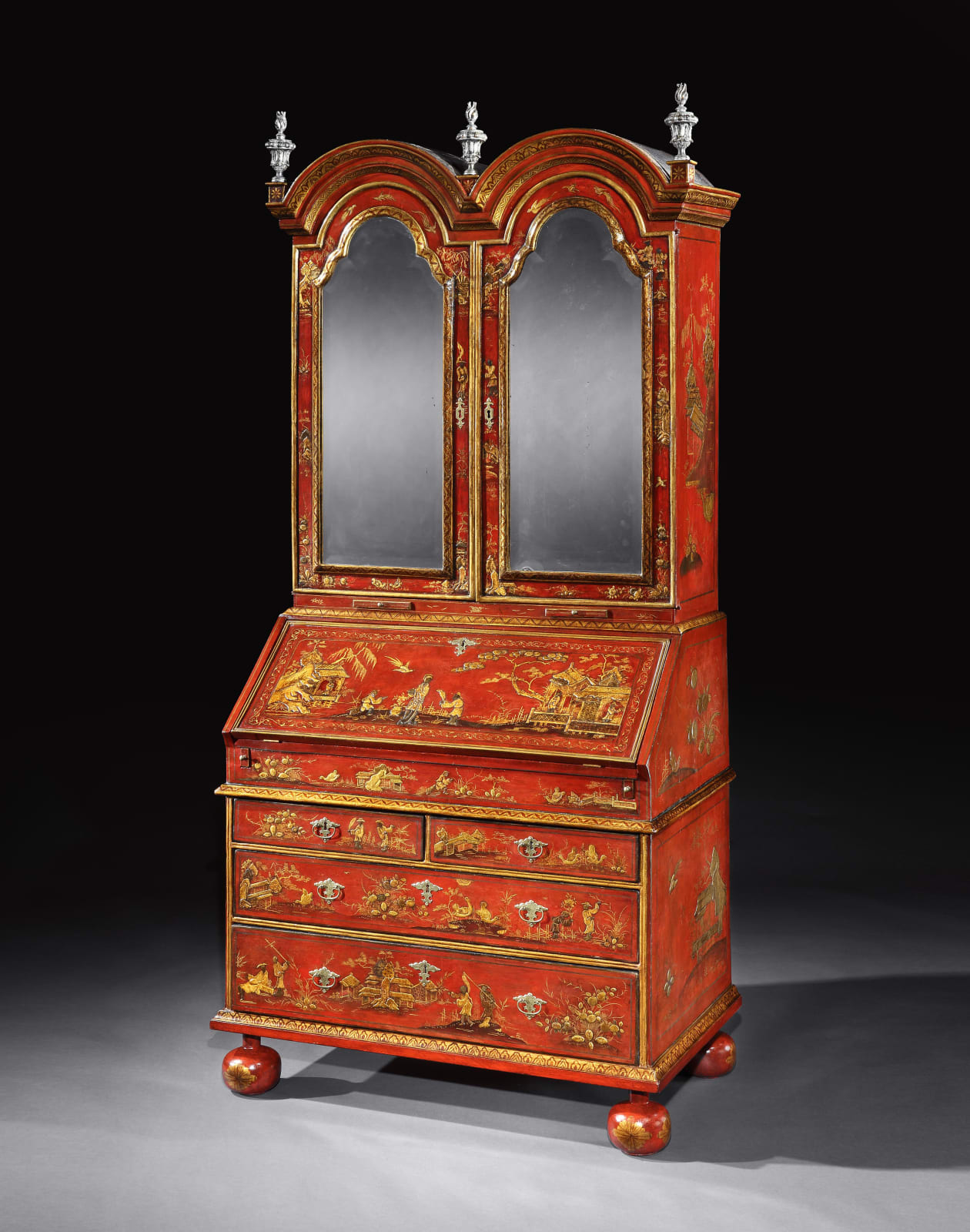Cabinets & Desks
A QUEEN ANNE SCARLET AND GILT-JAPANNED BUREAU-BOOKCASE
W: 41” / 104.1cm
D: 24.5” / 62.2cm
Further images
Provenance
Private Collection: London, UK
Rolleston Ltd.
Private Collection: West Coast, USA
Literature
A. Bowett, English Furniture 1660-1714 From Charles II to Queen Anne (Woodbridge, 2002), p. 220
A. Bowett, Early Georgian Furniture 1715-1740 (Woodbridge, 2009), p. 61, pl. 2:16
A Queen Anne Scarlet and Gilt-Japanned Double-Dome Bureau Cabinet,
English, circa 1720
This exceptional double-dome bureau cabinet is a rare and supremely elegant expression of early 18th-century English taste for the exotic and fantastical. Lavishly japanned in scarlet and gold, the cabinet is a striking embodiment of the fascination with the East that swept European courts and aristocracy in the wake of expanding trade with China and Japan through the East India Company.
By the time this piece was made in the first quarter of the 18th century, lacquerwares, silks, tea, and porcelain were flooding into England, igniting a craze among the wealthy for objects that conjured visions of an imagined Orient. Cabinets such as this — dramatically japanned in imitation of Chinese lacquer — offered a domesticated stage for that fantasy. The decoration presents a characteristically pastoral and whimsical vision of Eastern life: golden-robed figures meander among oversized blossoms and birds, grand pagodas perch by water’s edge beneath delicate trees — a dreamscape painted in shimmering relief on a fiery scarlet ground.
This model — the bureau-cabinet — had only recently come into fashion at the time, superseding the earlier scriptors or escritoires. Inventories from the period show such pieces placed in bedchambers, dressing rooms, and private closets, where they served dual functions for writing, storage, and display. The mirrored domed doors would have provided a reflective surface for dressing, while the fitted interiors housed writing materials, clothing, and treasured porcelain.
Opening the doors reveals a superbly appointed interior comprising drawers, shelves, and a central cupboard — all above a pair of candle slides. The fall front encloses further drawers, pigeonholes, marbled pilasters, secret compartments, and an early 18th-century blue silk writing surface. The scale and arrangement provided ample space for both practical use and aesthetic display — particularly of imported blue-and-white porcelain, which would have perfectly complemented the cabinet’s vibrant palette.
A closely related example, supplied circa 1720 to John Meller for Erddig Hall, Wales, remains in situ and is attributed to the eminent London cabinetmaker John Belchier. The Erddig cabinet shares many features with the present piece, including its double-domed form, scarlet japanning, and interior architecture, although it is arguably less refined in both its decorative execution and proportion. Belchier, who operated from St. Paul’s Churchyard, supplied a number of important japanned items to Meller between 1722 and 1726, and remains a compelling candidate for the authorship of this cabinet.





